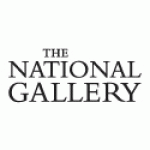How you can use this image
This image can be used for non-commercial research or private study purposes, and other UK exceptions to copyright permitted to users based in the United Kingdom under the Copyright, Designs and Patents Act 1988, as amended and revised. Any other type of use will need to be cleared with the rights holder(s).
Review the copyright credit lines that are located underneath the image, as these indicate who manages the copyright (©) within the artwork, and the photographic rights within the image.
The collection that owns the artwork may have more information on their own website about permitted uses and image licensing options.
Review our guidance pages which explain how you can reuse images, how to credit an image and how to find images in the public domain or with a Creative Commons licence available.
Buy a print or image licence
You can purchase this reproduction
If you have any products in your basket we recommend that you complete your purchase from Art UK before you leave our site to avoid losing your purchases.
Notes
Add or edit a note on this artwork that only you can see. You can find notes again by going to the ‘Notes’ section of your account.
The Virgin Mary tenderly supports the infant Christ in her arms. Gilded backgrounds like this derived from icon paintings produced in the Byzantine (Eastern Christian) Empire. By the time the picture was made, they had largely been replaced in Italian painting by landscape or architectural backdrops. Christ’s blessing gesture, a sign of his divine authority, is also derived from Byzantine art. These elements might be deliberate references to a particular icon thought to have been painted by the Gospel writer Saint Luke, which was in the church of Santa Maria Maggiore, Rome. It was thought to have miraculous powers, making it very popular to copy: each version was thought to multiply the power of the original. Here the artist has altered the image by framing the figures in a mandorla (an almond-shaped enclosure).
Title
The Virgin and Child in a Mandorla with Cherubim
Date
about 1480-1500
Medium
Tempera on wood
Measurements
H 46 x W 32 cm
Accession number
NG702
Acquisition method
Presented by Queen Victoria at the Prince Consort's wish, 1863
Work type
Painting


